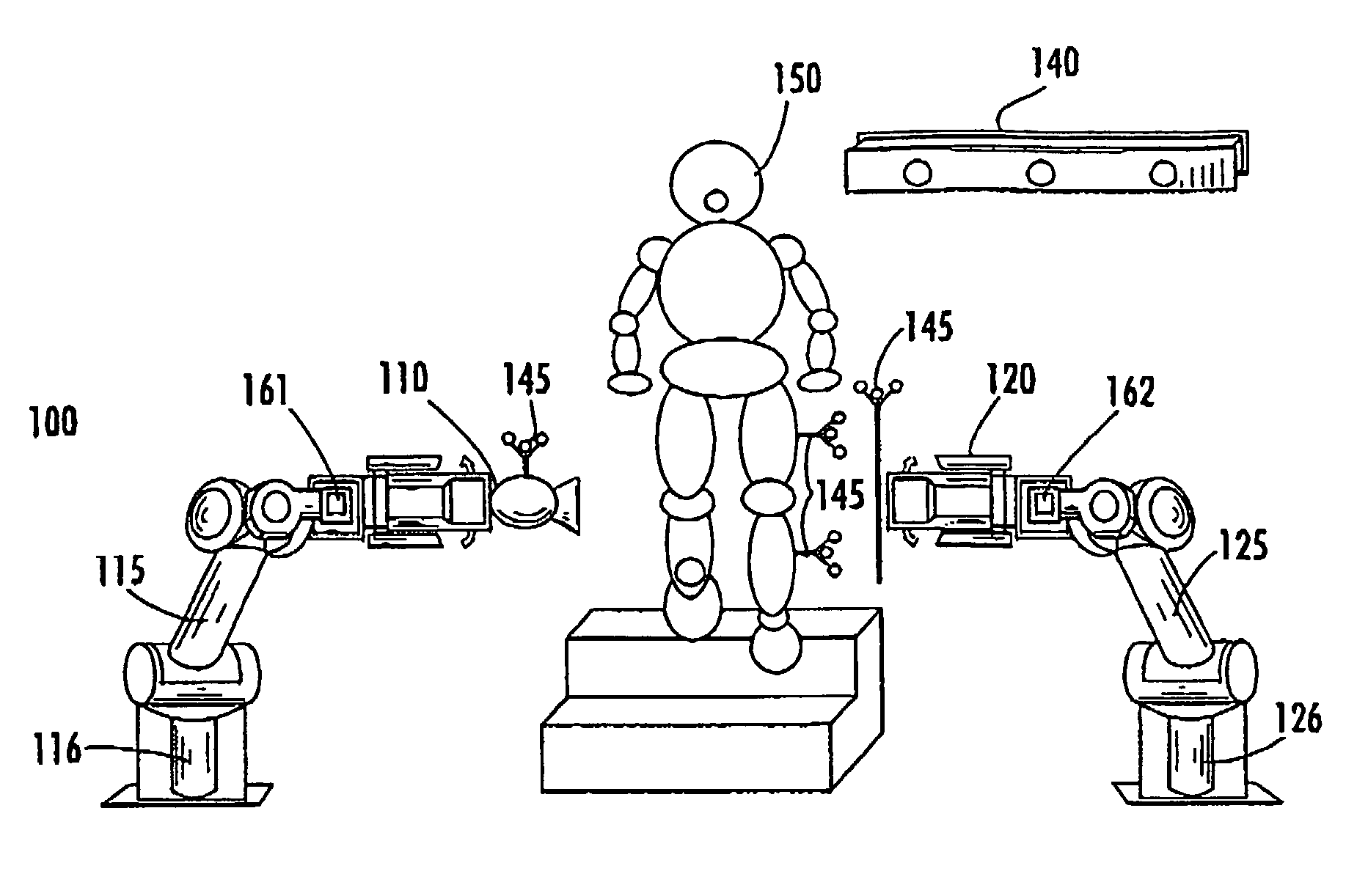Radiographic medical imaging system using robot mounted source and sensor for dynamic image capture and tomography
a technology of which is applied in the field of radiographic medical imaging systems using a robotic mounted source and sensor for dynamic image capture and tomography, can solve the problems of difficult direct observation or quantification of joint motion, inability to assess with normal dynamic joint load or muscle load, and difficulty in accurate assessment of joint motion
- Summary
- Abstract
- Description
- Claims
- Application Information
AI Technical Summary
Benefits of technology
Problems solved by technology
Method used
Image
Examples
Embodiment Construction
[0026]An imaging system 100 according to the invention is shown in FIG. 1 configured for dynamic as well as static imaging of the foot / ankle of patient 150. Although shown in FIG. 1 for foot / ankle measurements, system 100 can be used for dynamic radiographic imaging during natural activities such as walking, stair-climbing and lifting, and easy observation of other parts of the body of patient 150, such as the knee, hip, lumbar spine, cervical spine and shoulder.
[0027]The imaging system 100 includes a penetrating radiation source 110 (e.g. x-ray) including a first translating device 115 comprising a position controller 116 for controlling the position of radiation source 110. A gating controller (not shown in FIG. 1) is provided for controlling the timing of emissions from source 110. Radiation detector 120 includes a second translating device 125 comprising a position controller for moving the detector 120. The radiation source 110 and detector 120 are aligned so that radiation fro...
PUM
 Login to View More
Login to View More Abstract
Description
Claims
Application Information
 Login to View More
Login to View More - Generate Ideas
- Intellectual Property
- Life Sciences
- Materials
- Tech Scout
- Unparalleled Data Quality
- Higher Quality Content
- 60% Fewer Hallucinations
Browse by: Latest US Patents, China's latest patents, Technical Efficacy Thesaurus, Application Domain, Technology Topic, Popular Technical Reports.
© 2025 PatSnap. All rights reserved.Legal|Privacy policy|Modern Slavery Act Transparency Statement|Sitemap|About US| Contact US: help@patsnap.com



